Motivation
In my homelab, I’ve set up a K3s cluster using the default Traefik ingress controller. Some services I run shouldn't be publicly accessible. This article explains how to configure a K3s cluster to restrict access to certain services based on the client’s IP address.
Requirements
- A K3s cluster with a demo whoami app deployed:
k3s.rocks: First Deploy - K3s with Traefik and Let's Encrypt configured:
k3s.rocks: HTTPS with Cert-Manager and Let's Encrypt - Working DNS routing.
My DNS hostname is accessible both internally and externally. Internal DNS resolves to the cluster’s local IP, while external DNS resolves to its public IP. DNS configuration is outside the scope of this guide.
The Problem
By default, Traefik does not preserve the client’s original IP address. Instead, requests appear to come from the cluster IP of the ingress proxy (e.g., 10.42.0.1). This makes it impossible to distinguish between internal and external clients by IP.
The whoami app helps us diagnose this. It echoes headers like X-Real-IP. In this image, the X-Real-IP is reported as 10.42.0.1, Traefik’s internal IP—not the real client’s IP.
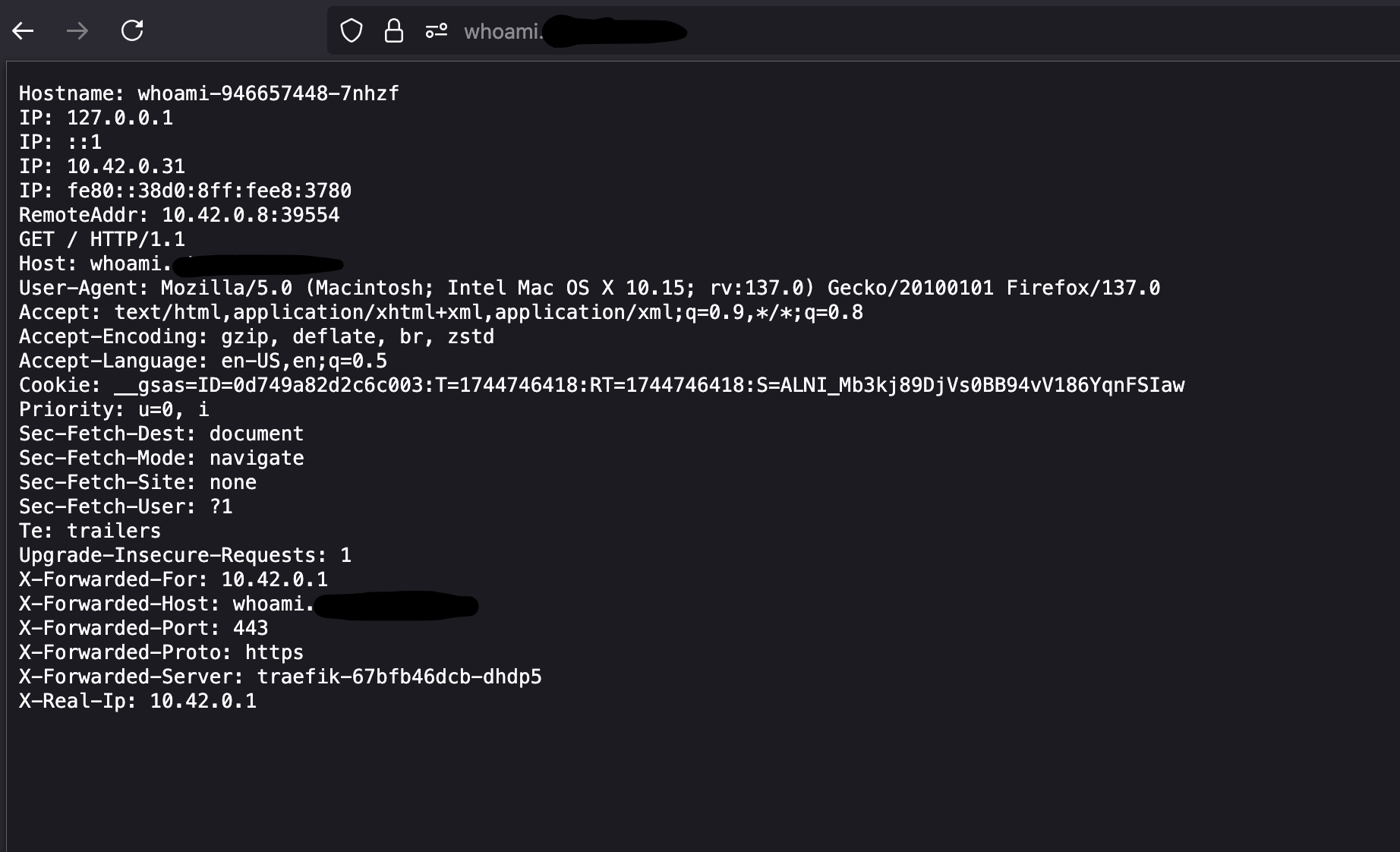
Step 1: Preserve the Client’s IP Address
To preserve the source IP, we need to update the externalTrafficPolicy setting on the Traefik service. This is a standard Kubernetes Service setting that, when set to Local, preserves the source IP. See the Kubernetes documentation for details.
Apply the setting with:
kubectl patch svc -n kube-system \
-p '{"spec":{"externalTrafficPolicy":"Local"}}' traefik
Once applied, X-Real-IP will show your actual LAN or WAN IP depending on where you're connecting from.
LAN Client Example:
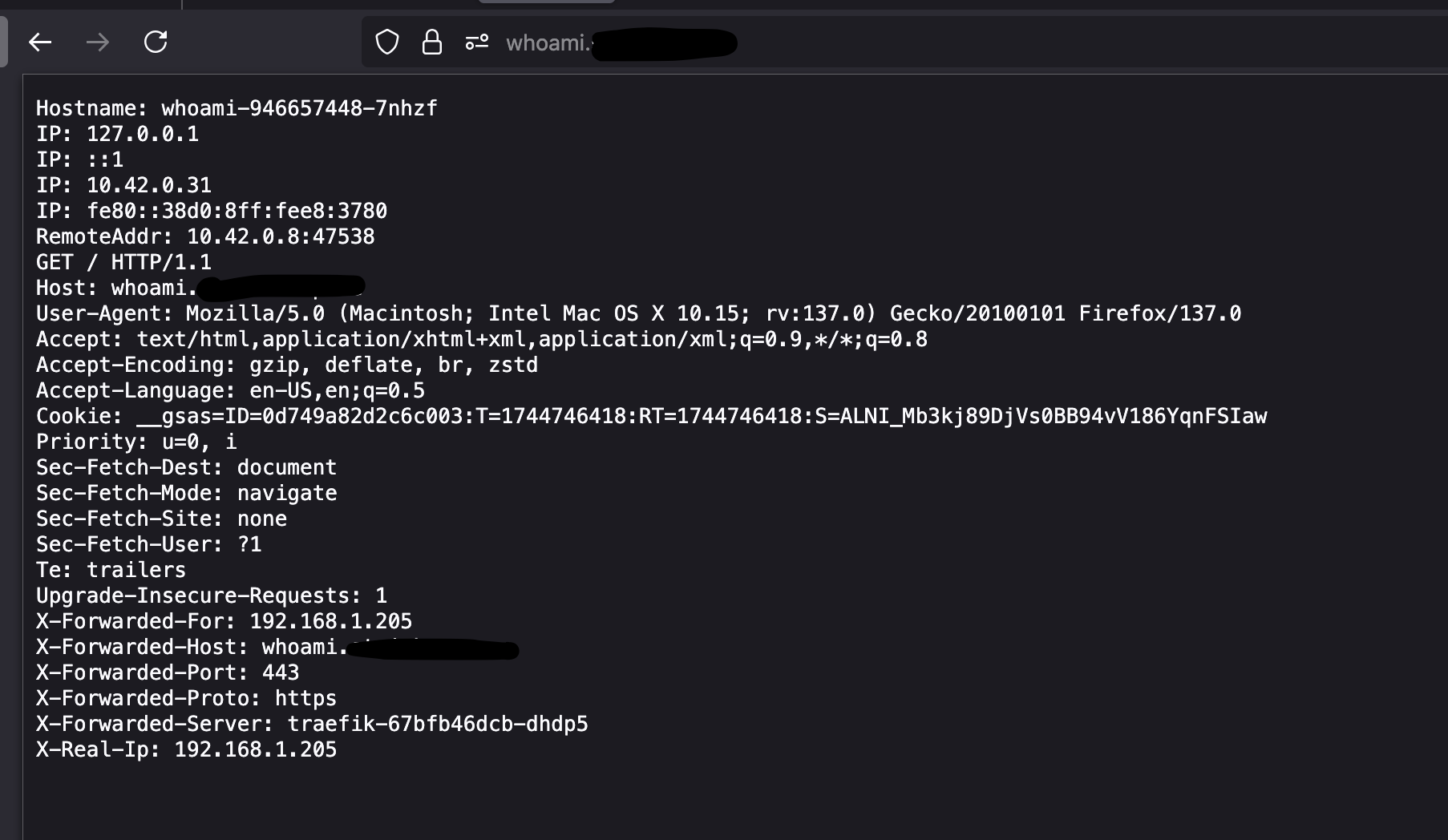
WAN Client Example:
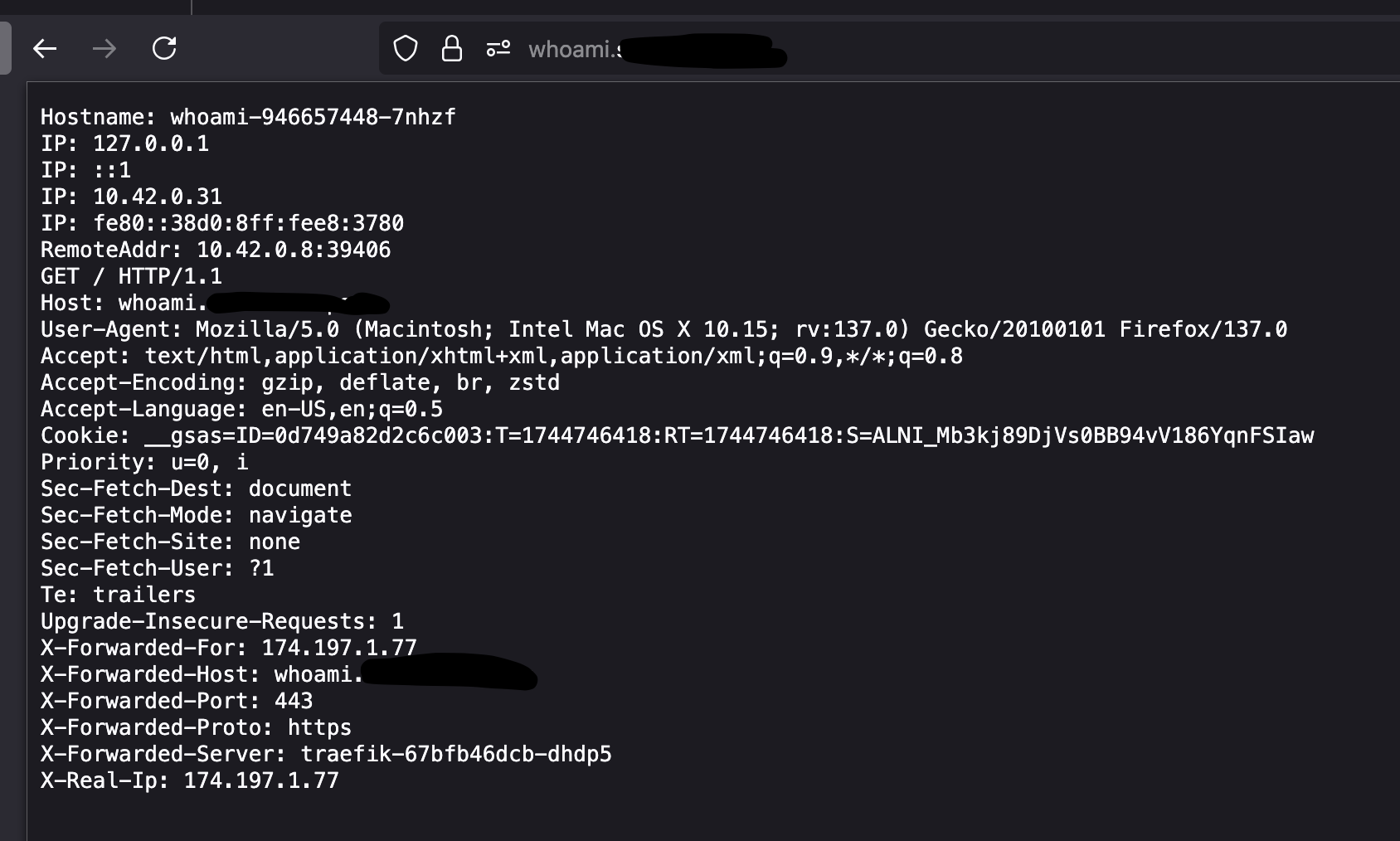
Now that we can differentiate clients by IP, we can block unwanted access.
Optional: Using a YAML Patch for Persistent Configuration
For easier reproducibility, create a patch file called external-traffic-policy-local-patch.yaml:
spec:
externalTrafficPolicy: Local
Then apply it with:
kubectl patch svc traefik \
-n kube-system \
--patch-file external-traffic-policy-local-patch.yaml
Same effect—just more repeatable than using CLI commands.
Step 2: Create Middleware to Restrict IP Access
Now we’ll use a Traefik middleware to allow only local clients.
Create the middleware definition in a YAML file, e.g., traefik-local-ipwhitelist.yml:
apiVersion: traefik.io/v1alpha1
kind: Middleware
metadata:
name: local-ip-allowlist
spec:
ipWhiteList:
sourceRange:
- 192.168.1.0/24
Apply it with:
kubectl apply -f traefik-local-ipwhitelist.yml
Verify with:
kubectl describe middleware local-ip-allowlist
You should see the middleware listed and its rules.
Step 3: Add Middleware to Your Ingress
We have created a middleware to whitelist local IP ranges, now we must update our Ingresses to use that middleware. We do this by adding an annotation to the Ingress resourcee. Let’s say you have a service like Transmission with this ingress:
apiVersion: networking.k8s.io/v1
kind: Ingress
metadata:
name: transmission-tls-ingress
annotations:
spec.ingressClassName: traefik
cert-manager.io/cluster-issuer: letsencrypt-prod
spec:
rules:
- host: transmission.[REDACTED].com
http:
paths:
- path: /
pathType: Prefix
backend:
service:
name: transmission-service
port:
number: 9091
tls:
- secretName: transmission-tls
hosts:
- transmission.[REDACTED].com
We configure this ingress by adding the "traefik.ingress.kubernetes.io/router.middlewares" annotation and specifying the "local-ip-allowlist" middleware we just created:
annotations:
traefik.ingress.kubernetes.io/router.middlewares: >
default-local-ip-allowlist@kubernetescrd
If you're using multiple middlewares, separate them with commas:
annotations:
traefik.ingress.kubernetes.io/router.middlewares: >
default-redirect-https@kubernetescrd,
default-local-ip-allowlist@kubernetescrd
⚠️ Only the last
router.middlewareskey is used if defined multiple times. Combine all middlewares into one annotation.
Example Ingress With Middleware
apiVersion: networking.k8s.io/v1
kind: Ingress
metadata:
name: transmission-tls-ingress
annotations:
spec.ingressClassName: traefik
cert-manager.io/cluster-issuer: letsencrypt-prod
traefik.ingress.kubernetes.io/router.middlewares: >
default-redirect-https@kubernetescrd,
default-local-ip-allowlist@kubernetescrd
spec:
rules:
- host: transmission.[REDACTED].com
http:
paths:
- path: /
pathType: Prefix
backend:
service:
name: transmission-service
port:
number: 9091
tls:
- secretName: transmission-tls
hosts:
- transmission.[REDACTED].com
Now just apply the ingress configuration and we are ready to test.
kubectl apply -f ingress.yml
Results: Access is Now Restricted by IP
When I access my Transmission instance from a local IP, it loads as expected:
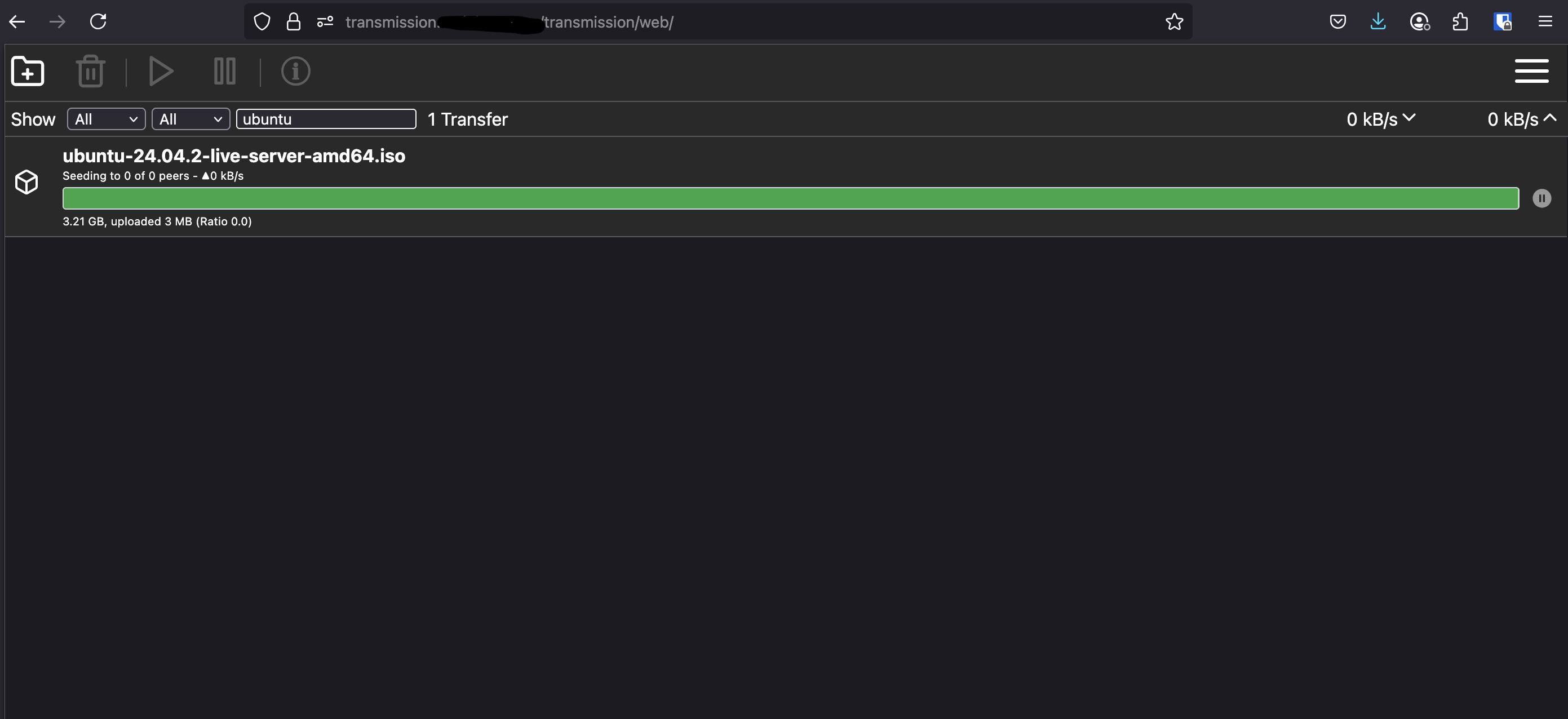 When I access it from an external IP, I get denied:
When I access it from an external IP, I get denied:
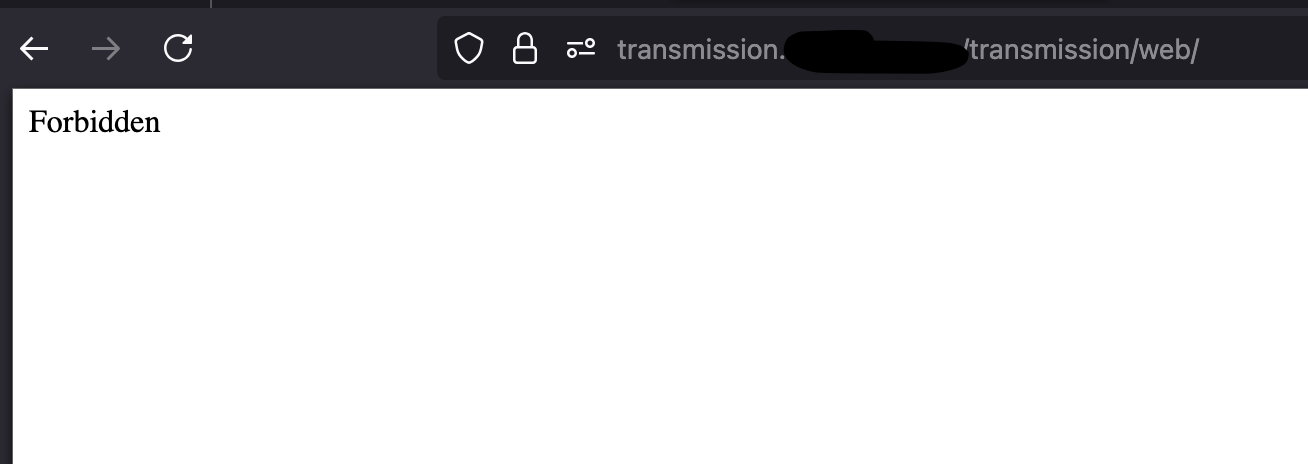
Final Thoughts
Restricting services to local IPs adds an easy layer of security to your homelab or dev environment. This method is simple to implement, repeatable, and doesn’t require additional tools or services.